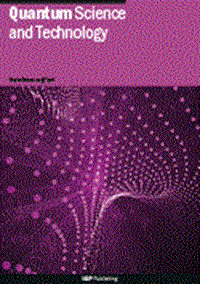Practical twin-field quantum key distribution parameter optimization based on quantum annealing algorithm
IF 5.6
2区 物理与天体物理
Q1 PHYSICS, MULTIDISCIPLINARY
引用次数: 0
Abstract
Twin-field quantum key distribution (TF-QKD) is widely studied since it can surpass the key capacity of repeaterless QKD, whereas electromagnetic interference (EMI) is one of the main challenges in its practical applications. This study is based on the Faraday–Michelson TF-QKD. Analyze the effect of EMI on the rotation angle of the Faraday mirror causing an additional quantum bit error rate (QBER). Moreover, the quantum annealing algorithm (QA) based on quantum tunneling mechanism is applied to the optimization of practical TF-QKD. Mapping the secure key rate of TF-QKD into the evaluation function of QA and the transverse magnetic field is introduced to construct the kinetic energy term, which can realize the quantum tunneling effect. Meanwhile, the QA is improved in terms of chaotic optimization to obtain the dynamic initial value of the algorithm, the design of a perturbation method to skip the locally optimal solution, and the use of suitable temperature and magnetic field decay functions. Optimizing TF-QKD with QA, the standard deviation of QBER fluctuation caused by EMI is reduced to 0.206, the mean square error of the signal-state pulse intensity is only , and the optimization accuracy of the secure key rate can reach 99.8 . Additionally, this optimization method shortens the runtime and reduces computational resource consumption, making it highly efficient for practical implementations.基于量子退火算法的实用双场量子密钥分发参数优化
双场量子密钥分发(TF-QKD)可以超越无中继器 QKD 的密钥容量,因此被广泛研究,而电磁干扰(EMI)是其实际应用中的主要挑战之一。本研究以法拉第-迈克尔逊 TF-QKD 为基础。分析电磁干扰对法拉第镜旋转角度的影响会导致额外的量子比特错误率(QBER)。此外,还将基于量子隧道机制的量子退火算法(QA)应用于实用 TF-QKD 的优化。将 TF-QKD 的安全密钥率映射到 QA 的评估函数中,并引入横向磁场构建动能项,从而实现量子隧道效应。同时,从混沌优化获得算法动态初值、设计扰动方法跳过局部最优解、使用合适的温度和磁场衰减函数等方面对 QA 进行了改进。用 QA 优化 TF-QKD 时,电磁干扰引起的 QBER 波动标准偏差降低到 0.206,信号态脉冲强度的均方误差仅为Ⅴ级,安全密钥率的优化精度可达 99.8。此外,这种优化方法还缩短了运行时间,减少了计算资源消耗,在实际应用中具有很高的效率。
本文章由计算机程序翻译,如有差异,请以英文原文为准。
求助全文
约1分钟内获得全文
求助全文
来源期刊

Quantum Science and Technology
Materials Science-Materials Science (miscellaneous)
CiteScore
11.20
自引率
3.00%
发文量
133
期刊介绍:
Driven by advances in technology and experimental capability, the last decade has seen the emergence of quantum technology: a new praxis for controlling the quantum world. It is now possible to engineer complex, multi-component systems that merge the once distinct fields of quantum optics and condensed matter physics.
Quantum Science and Technology is a new multidisciplinary, electronic-only journal, devoted to publishing research of the highest quality and impact covering theoretical and experimental advances in the fundamental science and application of all quantum-enabled technologies.
 求助内容:
求助内容: 应助结果提醒方式:
应助结果提醒方式:


